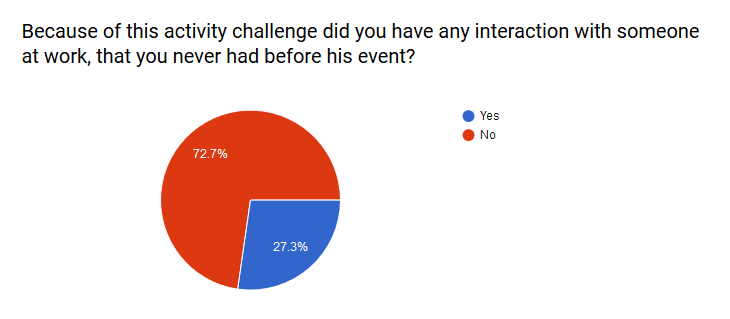![]()
Corporate health and well-being has been around as a concept for a long time. Longer than you might think, in fact. Companies in the USA introduced initiatives to promote health in the workplace as far back as the 1880s. Companies such as The Pullman Company and National Cash Register started with the establishment of an athletic association for employees, and meeting employees before work to go on horseback rides.
These companies went on to implement twice-daily exercise breaks, and building on-site gyms and recreation parks for their employees by the early 1900s. After World War ll, things become more mainstream – with such companies as Texas Instruments, Rockwell and Xerox implementing employee fitness programs. The 1950s saw the emergence in the USA of the Employee Assistance Program (EAP) and the Occupational Health & Safety Administration (OSHA) with the aim of avoiding workplace accidents and work-related illness.
Throughout the 1980s, health and safety fell under the same umbrella – with health possibly being safety’s poorer cousin. The focus of this area fell on safety, to the extent where today you can’t even look inside a warehouse without wearing a Hi Vis vest, or load a photocopier with a ream of paper without having first been on a full day manual handling course.
A focus on workplace health
Fortunately, health became just as important as safety, and companies started to look to employee Occupational Health professionals to ensure the health and well-being of their most valuable asset – their employees. Things were starting to change.
In 1984, the World Health Organisation (WHO) Regional Office for Europe defined health promotion as “…the process of enabling people to increase control over, and to improve, their health” in addition to methods to change lifestyles.
The ‘first and best known’ definition of health promotion, promulgated by the American Journal of Health Promotion since at least 1986, is, “…the science and art of helping people change their lifestyle to move toward a state of optimal health.”
Today, health promotion officers manage employee health engagement programmes within an organisation. In recent years, these programmes have taken many shapes and forms. Typically, they will have a number of elements focusing on general health, nutrition and mental well-being. Many companies now provide health workshops and health talks around such topics, have health screening and smoking cessation programmes, and promote various forms of physical activity, such as taking part in fun runs and bike rides, usually with a fundraising element attached.
Implementing health programmes in organisations
The promotion of physical activity has generally been somewhat of a difficult element to implement, especially if an organisation has multiple sites and locations across the globe, as it’s impossible to get everyone to turn up for time and location dependent events. To overcome the challenge of trying to get all employees to attend a company health initiative at a given time, date and location, companies have started introducing fitness trackers for employees to engage them in physical activity.
Companies such as BP (British Petroleum) distributed 25,000 Fitbit tracking devices to their staff – the Fitbit wearable fitness tracking device comes as a bracelet or a clip-on option that monitors your steps, calorie intake and burn, and even your sleep pattern. In the USA, employees were able to earn activity points which led to staff discounts on their health insurance. We’ve also seen companies launch pedometer challenges, which is an activity challenge based on the number of steps being completed by each employee, tracked on a mini step counter device clipped onto the body. Today, pedometers are incorporated into most smartphones.
You may wonder why companies spend so much on health initiatives for their employees. It’s been said that healthy, happy employees are good for business, and they are. Employers care about the health of their employees and as their employees are their most valuable assets, they naturally want to protect them and ensure they are healthy and fit. It’s no secret that the health and wellness of employees has a direct effect on an organisation’s ultimate success. Engaging in physical activity is advantageous to the health of the employee, the employer and the organisation as a whole. In fact, managers and supervisors who regularly participate in physical activity have a more positive relationship with subordinates and other employees.
The advantages of a healthy workforce
The benefits of a healthy workforce are well recognised. Evidence shows that employing a physically active workforce can reduce sickness-related absence by up to 20%, increase productivity by up to 15%, improve quality of service and raise the public image of the company. A survey completed by Ibec estimates that it costs every employer in Ireland just over €800 per year in unscheduled absences per employee, with a total cost of nearly €1.5 bn to Irish employers annually.
Organisational benefits
Organisational benefits of a healthy active workforce include:
- increased productivity
- increased profits
- decreased costs due to reduced absenteeism
- decreased company health care costs
- improved human resources through better recruitment
- lower employee turnover
- improved employee relations
- lower level of employee stress
- improved work environment
- enhanced corporate image
Employees spend a significant amount of time at work. Businesses already have a substantial investment in each worker in terms of recruitment, training, compensation, and benefits packages. Encouraging a culture of physical activity helps to protect that investment and capitalise on the returns in cost savings, cost avoidance, productivity and human capital.
Employee benefits
Engaging in a physically active lifestyle is known to:
- reduce stress and anxiety
- reduce tiredness
- lift moral
- reduce the risk to various health conditions
- improve mental well-being
- improve overall physical fitness & agility
In 2015, we set about solving a problem we had identified with large employers: how to keep their employees healthy and engaged in physical activity all year round. We developed an online platform for employers to engage their employees in their own health through the employees’ existing fitness tracking devices and apps. This BYOD (Bring your own device) system immediately saves the employer the initial capital outlay that is required, in most cases, when an employer wants to get their employees engaged with their own health all year round.
The other issue with trying to run any initiative through fitness tracking devices and apps is convincing all your employees to use the same app or device, and this can be difficult because the people who are most likely to engage with any health initiative are the ones who are already out there being active and using existing tracking apps/devices. Convincing these people to switch to the company’s chosen app/device can be a massive barrier to maximising the participation of the employees.
An activity challenge to raise engagement
We knew that employers where interested in promoting healthy lifestyles to their employees, but how they could engage their employees in healthy activities all year round was the problem we were trying to solve. And we knew that to maximise the participation of the employees, there had to be benefits to both the employer and employee alike. We set about developing a system that had benefits for all – it had to be fun, simple to use and would allow employers to engage, motivate and reward employees for being active, while also being cost effective for the employer to implement.
In association with Sligo Chamber of Commerce, and sponsored by From Me2You gift cards, KudosHealth launched a Workplace Activity Challenge. The aim of the challenge was to engage the employees from a group of large employers and organisations in a four week competition based on the physical activities the employees were completing in their own time, such as walking, running, cycling, etc. The secondary aim of the challenge was to discover what motivated employees to take part in workplace challenges.
Over 400 employees took part, representing some of the biggest employers in the region in an inter-firm activity challenge from the 9th Sept to 7th Oct 2016. Employees were able to connect their existing fitness tracking such as Fitbit, Strava, RunKeeper or GoogleFit to the KudosHealth platform to record and register their fitness activities. They were awarded points, and each individual’s points were then averaged out to form the ‘Company Score’ which was then presented on a Company Leader-board.
Employee survey summary
The following charts show the key findings of our survey.
Insights from the survey
One interesting statistic that emerged from the subsequent employee survey was that a staggering 69% of the users who took part said they did it to be part of a team; many users were completing their activities alone or in small groups, but the KudosHealth system allowed the individual activities to contribute to a team score and this was the single biggest reason for taking part.
Another interesting statistic that emerged from the survey is that 54% of the participants had never used a fitness tracking app prior to taking part in the event. The survey results also showed that 93% of people said they would take part in this type of event again, with 60% of the participants answering that they completed more exercise than they normally would during the challenge.
Implementing a workplace well-being initiative can have its challenges, but the rewards for businesses are clear in terms of reduced staff turnover and absence from sickness, a better motivated and happier workforce, and improved teamwork. If you are interested in how the KudosHealth platform could help you get started, we’d be happy to talk you through it.
About the author

Declan Trumble
Declan is a New Frontiers alumnus and the co-founder of KudosHealth. The startup has developed an employee health engagement SaaS solution aimed at large employers.
The business idea developed from discussions on how people are motivated to stay healthy, and how employers benefit as much from a person’s health status as they do themselves. The two decided that companies must be interested in motivating their workforce to stay healthy, and this led to discussions on what kind of health initiatives companies implement for their employees, and how they could be made better and more cost-effective.




















